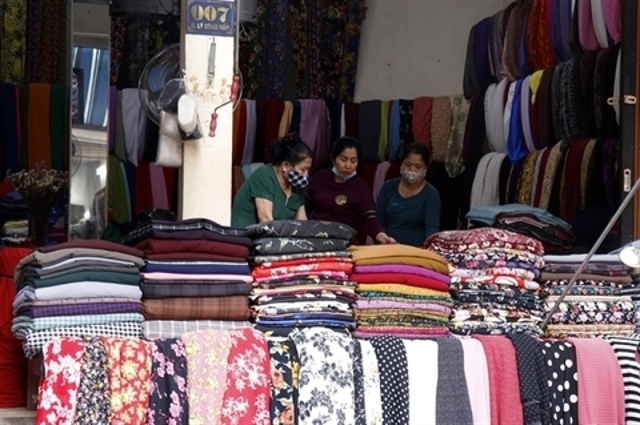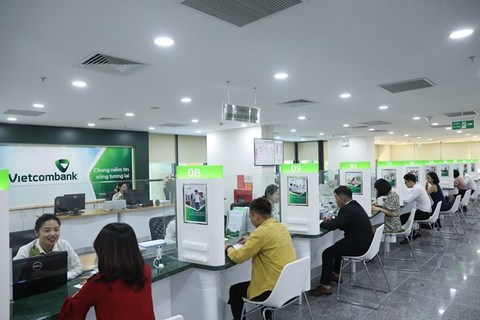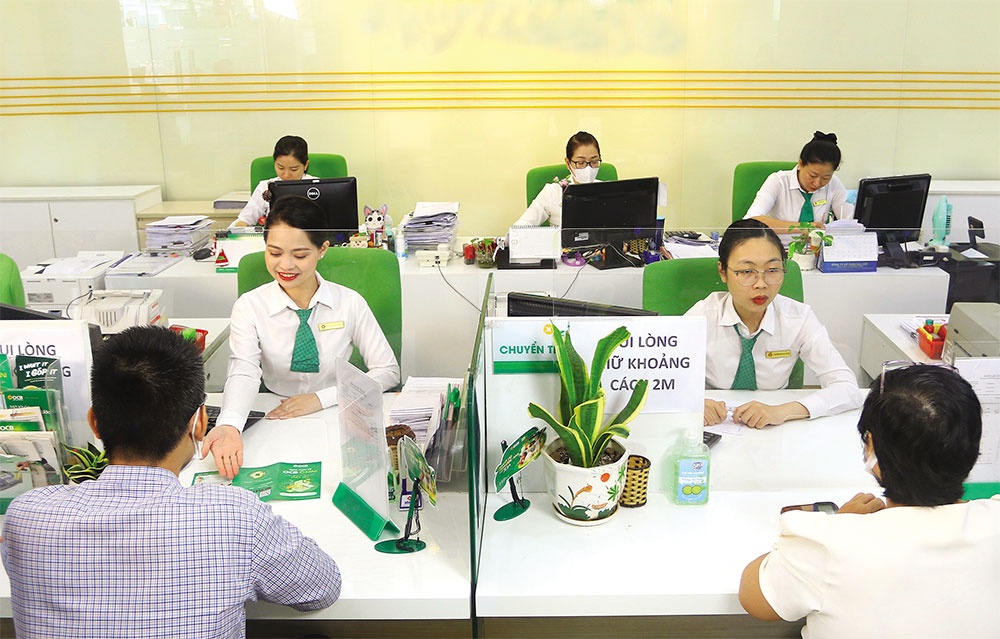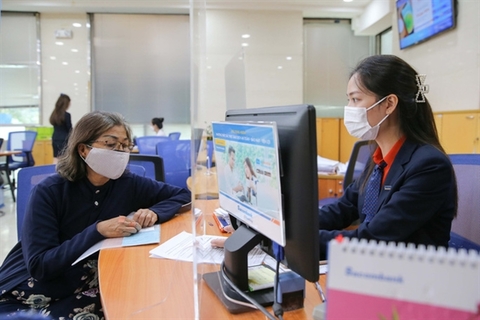Cost-cutting measures aid debt drop
Cost-cutting measures aid debt drop
Vietnam is witnessing a strong reduction in its public debt following its close control of the issue, with the government exercising a stringent policy on increasing revenues and reducing expenditures.
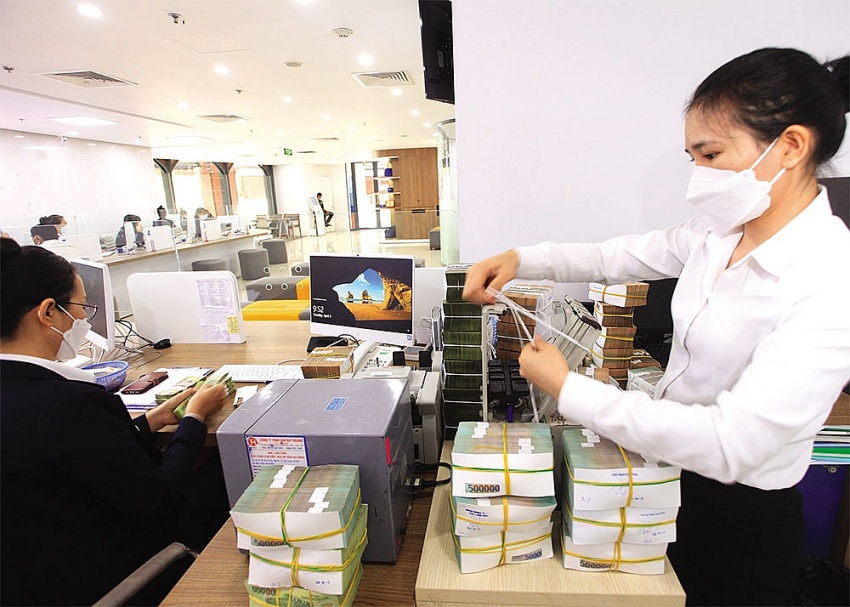
The Ministry of Finance (MoF) last week reported that Vietnam’s public debt for the 2017-2021 period reduced strongly from 61.4 per cent of GDP in 2017 to 43.1 per cent of in 2021, mainly due to pandemic-related spending, and the rate is expected to continue decreasing in 2023.
In addition, the government debt also dropped from 51.7 per cent of GDP in 2017 to 39.1 per cent last year, while government-guaranteed debt fell from 9.1 to 3.8 per cent, and localities’ debt has also been on a downward trend, from 1.1 to 0.6 per cent. Besides that, the nation’s external debt also shrank to 38.4 per cent last year from 49 per cent.
As of late last year, the country’s external debt to total export-import turnover in 2021 was 6.2 per cent, and the government’s debt to the state budget revenue sat at 21.8 per cent. According to the MoF, all the figures for public debt and external debt for 2021 were calculated based on the GDP for last year [of about $391.3 billion as revised GDP] announced by the Ministry of Planning and Investment.
Notably, in the 2017-2021 period, while the external debt reduced, the domestic debt increased. By late last year, the external debt stood at about $46.74 billion and the domestic debt sat at $95.65 billion or 69.2 per cent of the government’s debt.
The MoF reported that by late last year, the biggest bilateral creditors include Japan (over VND316 trillion or $13.74 billion), South Korea (over VND32 trillion or $1.39 billion), France (VND30 trillion or $1.3 billion), and Germany (VND14 trillion or $608.7 million).
Meanwhile, the biggest multilateral creditors are the World Bank (over VND380 trillion or $16.52 billion) and the Asian Development Bank (more than VND188 trillion or $8.17 billion).
According to the Executive Board of the International Monetary Fund, which in July worked with Vietnamese agencies on the country’s economic situation and macroeconomic monitoring, the country’s fiscal position remained strong in 2021, supported by encouraging revenue performance.
“Expenditure was also geared to the authorities’ long-term strategy, with budget disbursement for public investment projects reaching 94.94 per cent of the plan assigned by the prime minister. Fiscal deficit remained prudent at 3.41 per cent, under the 4 per cent target,” stated the executive board in a report. “The public debt level is sound at about 43.1 per cent of GDP and the country’s external debt is expected to be 38.4 per cent of GDP. Government-guarantee loans continued to decrease from 10.3 per cent of GDP in 2016 to 3.8 per cent of GDP in 2021.”
In 2022, the fiscal policy stance remains supportive to boost the economic recovery, through the implementation of the Programme on Socioeconomic Development and Recovery (PSDR) which is supported by a $15 billion fiscal and monetary policy.
“On the revenue side, priorities focus on implementing policy measures such as exemption, reduction, payment extension of taxes, fees, and land rent. On the expenditure side, the authorities prioritise spending for pandemic prevention and control, social security and safety net, and infrastructure investment,” the board said. “The authorities intend to increase the budget deficit to 4.7 per cent of GDP to implement the PSDR for 2022-2023, while maintaining public debt at about 45-46 per cent of GDP, and external debt at about 40-41 per cent of GDP.”
Maintaining safety
Minister of Finance Ho Duc Phoc said, “Vietnam’s public debt is staying within a permissible level set by the National Assembly (NA).”
The NA earlier set targets that the public debt is allowed to be a maximum of 60 per cent of GDP, the government’s debt 50 per cent of GDP, and the external debt 50 per cent of GDP, with the warning levels 55, 45, and 45 per cent of GDP, respectively.
It is expected that the Vietnamese government will in this year have loans worth a maximum of VND675.5 trillion or nearly $30 billion, in which as much as 96 per cent will be for the state budget balance, and the remainder for refinancing.
With this plan, if GDP this year grows with an expected 7 per cent rate, the public debt will be 43-44 per cent of GDP, the government’s debt 40-41 per cent of GDP, and the country’s external debt 40-41 per cent of GDP. The government’s direct debt payment will be 21-22 per cent of the state budget revenue.
Four months ago, the government promulgated Decision No.448/QD-TTg adopting Vietnam’s programme on public debt management for the 2022-2024 period and a strategy on public debt borrowing and payment until the end of 2021.
“The prime target is to ensure sufficient loans through diversified sources of capital and borrowing models both at home and abroad, so as to meet the demand of balancing the state budget, including loans for carrying out the PSDR,” read Decision 448. “The government also aims to “closely control debt safety norms, ensuring public debt stays within the limit permitted by the NA.”
Under Decision 448, total loans for 2022-2024 will be maximum of $88.87 billion, consisting of $83.78 billion for the central coffers and $5.08 billion for refinancing. The total debt that will be paid by the government during this period is calculated at $48.52 billion, including $42.21 billion for direct payment and $6.3 billion for refinancing payments.
“It is necessary to take the initiative in debt payment with overdue debts not allowed to happen as it will affect the government’s international commitments,” stated Decision 448.
Close budget control
In the resolution of the government’s July cabinet meeting on Vietnam’s socioeconomic situation, Prime Minister Pham Minh Chinh ordered the continuation of effective control of the state budget.
The government has been deploying a policy of intensifying more examinations and inspections, and strictly punishing all violators of state budget management.
“The inspections will be focused on some key sectors including management of land, natural resources and minerals; public investment; management and use of public assets; and equitisation of state-owned enterprises,” said Minister Phoc.
In June, the National Assembly Economic Committee also noted that this year, there will be strengthened management and an intensified fight against transfer pricing, tax evasion, and trade fraud. The government and the NA have also required ministries, agencies, and localities to implement schemes for reviewing state funding, so as to gather the money for economic recovery and development activities.
At least half of the costs for organising conferences and trips abroad for ministries, central agencies, and localities must be decreased – except for costs for fighting the pandemic and implementing diplomatic activities. No more money is provided for unnecessary activities. The government will further strengthen the financial and state budget discipline, with radical thrift in recurrent spending.
The government reported that in 2021, about 6,800 administrative inspections and nearly 177,300 specialised inspections were deployed nationwide, uncovering a total economic violation of $7.78 billion; and mismanagement and misuse of over 9,250 hectares of land. Authorised agencies have revoked $773.9 million for the state budget and 811ha of land to date.
Moreover, administrative sanctions have been inflicted on over 2,340 organisations and nearly 6,250 individuals. Almost 450 cases will continue facing probes, involving around 260 people.
All of these stringent solutions are aimed to make the use of the state budget become more transparent and effective, and also help continue ensuring a safe level of public debt for 2022 and beyond, said the MoF.
The General Statistics Office reported that in the first seven months of the year, total state budget revenues are estimated to be $47.54 billion, up 18.1 per cent on-year; and total state budget expenditures are estimated to sit at $36.64 billion, up 3.7 per cent on-year. This has resulted in a 7-month budget surplus of $10.9 billion.




